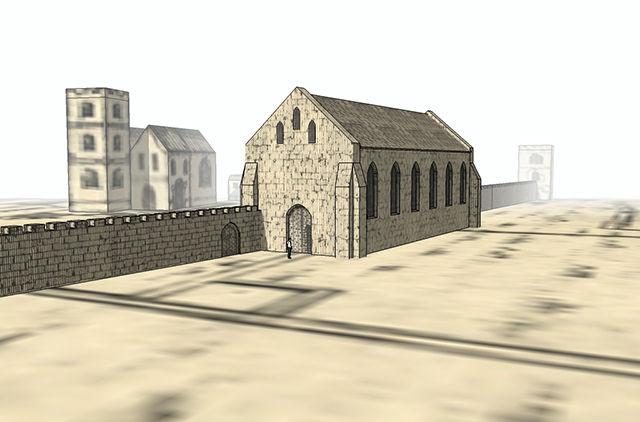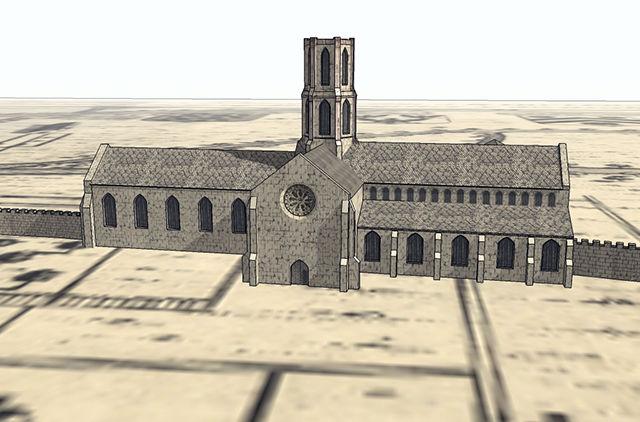With new 3-D visualization technologies, NC State English Professor Jim Knowles is closer to recreating how the past really looked in England. Knowles founded the Oxford Friars Project in 2011 to recreate the long-destroyed medieval English convents in Oxford that belonged to the Franciscan and Dominican orders.
“In Medieval Oxford, there were two major friaries, belonging to the Franciscans, or Greyfriars, and to the Dominicans, or Blackfriars,” Knowles said. “The buildings were knocked down at the time of the English Reformation, in the 1530s and ‘40s.”
Although the project was completed in 2011, it recently regained attention due to new archeological excavations of the sites in Oxford, according to Knowles.
“In the 1970s, there was a shopping mall built on top of the ruins of the medieval friaries in Oxford,” Knowles said. “This year they demolished the old mall to build a new one [Oxford Westgate Shopping Centre], and local law requires that real estate developers conduct an archeological survey whenever they do new construction in historic areas. They recently did another dig, even larger than the original one.”
Knowles’ project investigates the past of friars, who, Knowles said, are different from monks. He said that medieval friars were members of Catholic religious orders, similar to monks, but were urban rather than rural and took vows of poverty that forbade them for owning property.
“Thus the orders of friars were called ‘mendicant,’ which means begging,” Knowles said. “In theory, they didn’t possess any material goods and had to beg for their sustenance.”
The Oxford Friars Project grew out of Knowles’ essay, “Great Houses Make Not Men Holy: A Study of the Franciscan and Dominican Foundations in Medieval Oxford,” written while he was a doctoral student at Duke University.
“I suggested to James Knowles that we develop a visualization based on his essay, working together with Michal Koszycki, a senior at Duke,” said Caroline Bruzelius, professor of art history at Duke.
Knowles collaborated with Koszycki, then a Duke University undergraduate, in the summer of 2010 under the mentorship of Caroline Bruzelius.
“I did the background scholarship and put together the historical narrative and Michal did the architectural modeling of the buildings themselves,” Knowles said.
As an English professor, Knowles was fascinated with the history of the friars in Medieval Oxford because of their connections with literary history.
“The friars’ buildings are interesting cases because they were the target of fierce criticisms by medieval English writers like Chaucer and Langland,” Knowles said.
Knowles said he wanted to confirm if the literary criticisms of the friars had any basis in architectural fact.
Through the historical visualization, Knowles and his team were able to confirm that these criticisms of the English friars were legitimate and were not just repeating what other European writers of the time were saying.
“The visualizations of the Dominican and Franciscan convents of Oxford, based on the excavations done in the 1960s and 1970s, confirmed the criticisms of the friars as the buildings were excessively large structures,” Bruzelius said.
Nonetheless, the project had its own difficulties, as it was impossible to recreate these convents to 100 percent accuracy.
“We had ground plans of foundations that only told where the walls were,” Knowles said. “That was it. So we have no idea how tall these buildings actually were, and made educated guesses based on similar buildings from the same period.”
Still, the project is immensely important for its interdisciplinary methods, according to Bruzelius.
“This visualization brings together literature with archaeological information, a profoundly interdisciplinary, or transdisciplinary, study,” Bruzelius said.
The project showed the potential outreach of scholarly research to the interested public.
“As a website and video, it is accessible to the public online — a wonderful example of the potential outreach of scholarly research to the interested public,” Bruzelius said.









